
People Had No Idea Subtitles Can’t Replace Sign Language Until This Woman Pointed It Out
I am pretty sure that people who don’t have hearing loss will never fully understand all the issues that deaf people can go through, thus it’s normal to have questions. In fact, according to the 2021 American Community Survey, around 3.6% of the U.S. population, or approximately 11 million people, consider themselves deaf or have substantial problems hearing.
Luckily, one woman went viral, collecting over 500k views after answering Elon Musk’s tweet explaining the point of importance of sign language in videos despite having subtitles.
More info: TikTok
Sign languages are way more complex that they may seem to hearing people
Image credits: cottonbro studio (not the actual photo)
Woman shares that although subtitles should be available for everyone, for deaf people, it’s not the best option, after Elon Musk tweets asking what’s the point of sign language
Image credits: @elonmusk
“I’m sure that like a lot of hearing people probably think the same thing”
The creator of this video is Paige Brackner, who went online explaining the importance of sign language to hearing people. She started her video showing Elon Musk’s tweet where he asked what’s the point of sign language in a video if you have subtitles and if he is missing something. “Yes, you are missing something,” Paige started her video.
She noted that she is going to put the whole situation in perspective for hearing people – “Imagine you’re going to a movie and they tell you that the sound is not working.” She then noted that despite being able to read the subtitles, you would be still missing the experience. “Well, it’s the same thing with ASL.”
Paige then continued the video by explaining that ASL or any sign language is not a direct translation from spoken language. “It’s its own language, with grammar and structure and shows emotion and meaning through facial expressions and body language.” So, it’s not just word-for-word translation.
Image credits: u/paige3536
“Art, movies, videos, music is all meant to be enjoyed, and deaf people can enjoy it so much more if ASL is more accessible”
Moreover, Paige pointed out that subtitles should be accessible for everyone. However, it’s not the best option – “why should members of the deaf community not be given the best option?”
The woman shared that HBO Max did a showing of Barbie with ASL in the corner and it was beautiful. “I’m sure many people who are deaf watched the movie for the first time with signing and enjoyed it a lot more.”
Folks in the comments thanked the creator for the explanation as many of them had no idea about all of this. “I had no idea either. Honestly I used to think it was odd to see both too. This is really interesting. Thank you,” one user wrote. “Makes me think of the Rihanna Super Bowl ASL girl. She was vibing while signing,” another shared.
Image credits: Tima Miroshnichenko (not the actual photo)
To hear more about this topic, Bored Panda got in touch with Ahmed Khalifa, who is a deaf person helping the hearing world to hear deaf people better. His website Hear Me Out! [CC] is a place where hearing people can learn how to connect and engage with deaf people better, plus work together to bridge the gap between the hearing and deaf worlds!
“Just like for the rest of us, we could get the gist of what is said in other languages by reading it. But I’m sure we can all agree that we would prefer to access media content in our main language if given the option,” shared Ahmed. “For many deaf people, that means sign language, particularly because of how it is completely different to oral and written languages since the former has its own grammar, syntax and structure.”
He also put it into a more relatable complex for a better understanding – “For those who can read English, one would assume that you can read Spanish, German, French and many other languages that use very similar letters i.e. the Latin alphabets. But just because you can READ multiple languages, it doesn’t mean that you can understand them.”
Ahmed emphasized that the same applies for those who are Deaf and predominantly communicate in sign language. They may be able to read subtitles and generally understand it, but for many of them, they understand better when watching sign language interpretation in the media.
“They can also FEEL the media content better when it’s entertainment like a movie, because they are able to be part of the experience.” Ahmed noted that if sign language is their main language, that should be respected. “Just like we expect people to respect our own oral and written languages.”
Image credits: cottonbro studio (not the actual photo)
We also asked Ahmed for his opinion on whether incorporating ASL accessibility into media content can contribute to greater inclusion and representation of the deaf community – “It is impossible to work out how many people communicate in ASL because, like for other sign languages across the world, they are not counted by the national census,” he noted.
However, he added that it’s safe to assume that it will be in the hundreds of thousands in the US for ASL. “Whether you are running a business or in need to relay important public information, there is a huge audience within the Deaf community that could benefit from this but are often neglected.”
Finally, according to Ahmed, scenarios such as using public services like healthcare, government services, police, etc. are amongst other areas that can provide better accessibility for the Deaf community.
“The most obvious real-life examples would be for those that are in life and death situations,” he shared. “For example, there has been widespread anger during the height of COVID where public information about health and safety were provided to everybody apart from those who are Deaf and communicate in sign language.”
So this meant that people who are deaf are not provided with the same level of care and courtesy as the rest of the public as they were provided with accessible information and that ultimately meant they were at greater risk than the rest of the public.
However, he highlighted that it doesn’t always have to be in extreme circumstances. “Even in the normal day-to-day situation like opening up a bank account or buying a house will require accessibility as they are important life events that require clear communication and perfect understanding between the parties involved.” And for that to happen, sign language accessibility is critical to make sure that everyone is on the same page and nothing is lost in translations.”
So guys, it’s clear that ASL is much more complicated than probably many of us have thought and accessibility is quite an issue for the deaf community. However, what are your thoughts on this? Share your thoughts in the comments below!
Folks shared their gratitude for the creator and shared their experiences

Poll Question
Thanks! Check out the results:
You May Also Like
Woman Refuses To Chip In For Babysitting Because She Doesn’t Even Have Kids, Asks If She’s A Jerk
Do you think childless individuals should be expected to chip in for group babysitting costs during friend gatherings?
17 Y.O. Is Done Sharing Her Birthday With Her Late Twin, Parents Are Not Having It
Do you think the girl should be allowed to celebrate her birthday without the remembrance of her deceased twin?
One of the problems is subtitles are so useful, not just to Deaf/deaf people. If you have subtitles in English, then you've covered most people in the UK, Ireland, Australia, New Zealand, Australia, Canada, USA... and so many people who have English as a second (or third) language. If you are using ASL, then you are focused in on one small group. American Sign Language is not the same as British Sign Language, nor Australian etc. There would need to be multiple options for in-screen signing, one or more to match the country where the movie is being played. eg in Canada, English speakers use ASL, and French speakers use Langue des Signes Québécoise (LSQ). - - - - It's a huge deal cheaper to use subtitles than provide in-screen signing, in many many sign languages. It would be fantastic to have in-screen signing provided, but the reality is it's far, far cheaper to use subtitles, and it works for so many more people.
As a disabled person, I both hate your post and completely agree with it, if that makes sense.
Load More Replies...the thing is... american sign language is different from UK, Australian, New Zealand, etc sign language. having an option on region specific dvd's for a sign language version (aka the signer in the corner) would be the best option for this kinda thing, but honestly, it's easier to just have subtitles. And if you put it into all films as a "must have" it takes away from the film. unfortunately, to many of us, having some guy stood in the corner of the screen is really distracting, and having the actors themselves do it would distract from the film itself, and seem out of character. Also the different "languages" of sign language. though a sign language interpreter at specific screenings in cinemas is a great idea.
Without commenting on ASL vs English subtitles (other commenters have covered it perfectly), I'm just grateful if the show I am watching even has English subtitles. Too many free-to-air shows in Australia don't even provide subtitles; even with DVDs I have to check the details on the back cover first
Huh? Every free to air channel in Australia is legally obligated to have subtitles available for all programming between 6am and midnight and have been for quite a long time now. You've just gotta hit the subtitles button on your remote or enable them in your tv's settings.
Load More Replies...One of the problems is subtitles are so useful, not just to Deaf/deaf people. If you have subtitles in English, then you've covered most people in the UK, Ireland, Australia, New Zealand, Australia, Canada, USA... and so many people who have English as a second (or third) language. If you are using ASL, then you are focused in on one small group. American Sign Language is not the same as British Sign Language, nor Australian etc. There would need to be multiple options for in-screen signing, one or more to match the country where the movie is being played. eg in Canada, English speakers use ASL, and French speakers use Langue des Signes Québécoise (LSQ). - - - - It's a huge deal cheaper to use subtitles than provide in-screen signing, in many many sign languages. It would be fantastic to have in-screen signing provided, but the reality is it's far, far cheaper to use subtitles, and it works for so many more people.
As a disabled person, I both hate your post and completely agree with it, if that makes sense.
Load More Replies...the thing is... american sign language is different from UK, Australian, New Zealand, etc sign language. having an option on region specific dvd's for a sign language version (aka the signer in the corner) would be the best option for this kinda thing, but honestly, it's easier to just have subtitles. And if you put it into all films as a "must have" it takes away from the film. unfortunately, to many of us, having some guy stood in the corner of the screen is really distracting, and having the actors themselves do it would distract from the film itself, and seem out of character. Also the different "languages" of sign language. though a sign language interpreter at specific screenings in cinemas is a great idea.
Without commenting on ASL vs English subtitles (other commenters have covered it perfectly), I'm just grateful if the show I am watching even has English subtitles. Too many free-to-air shows in Australia don't even provide subtitles; even with DVDs I have to check the details on the back cover first
Huh? Every free to air channel in Australia is legally obligated to have subtitles available for all programming between 6am and midnight and have been for quite a long time now. You've just gotta hit the subtitles button on your remote or enable them in your tv's settings.
Load More Replies...
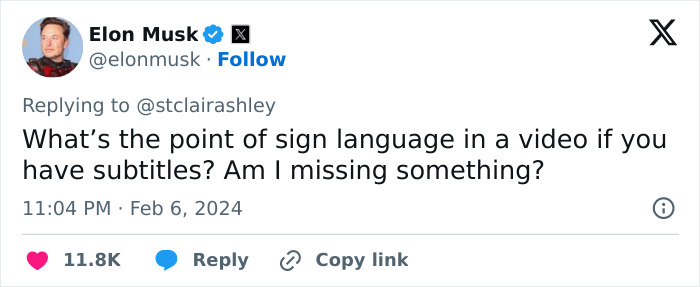
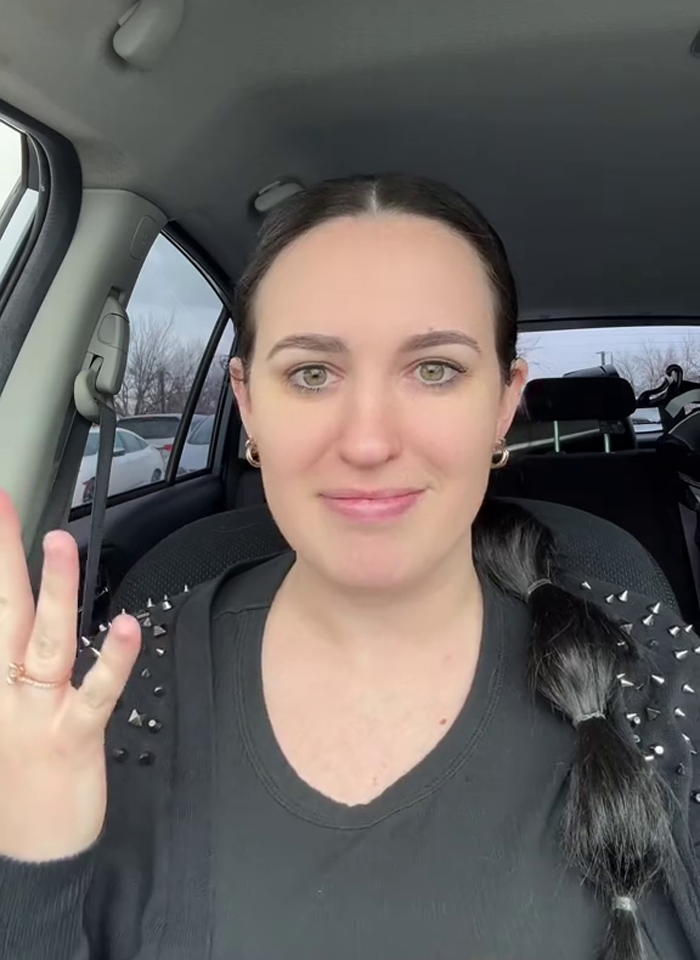
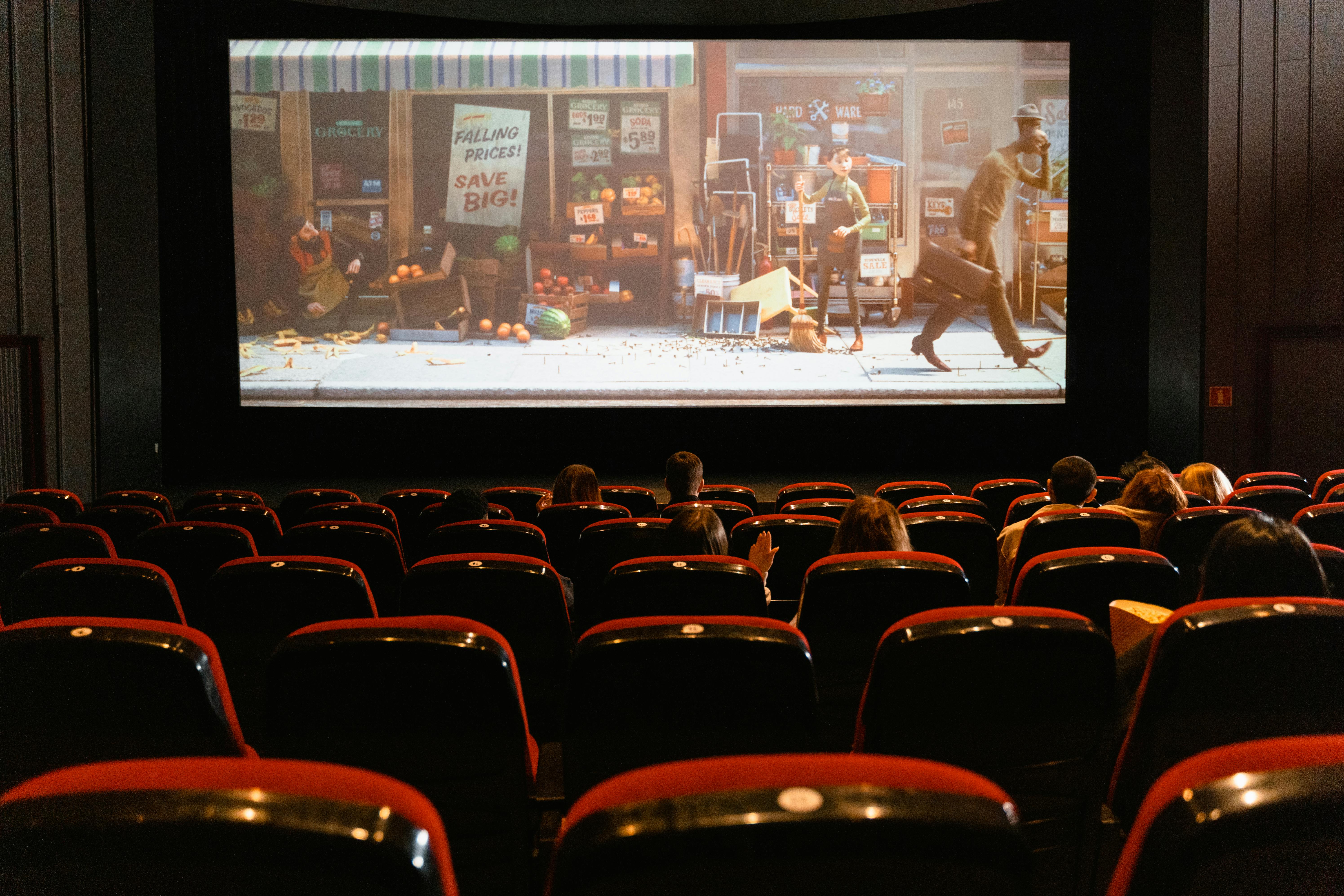
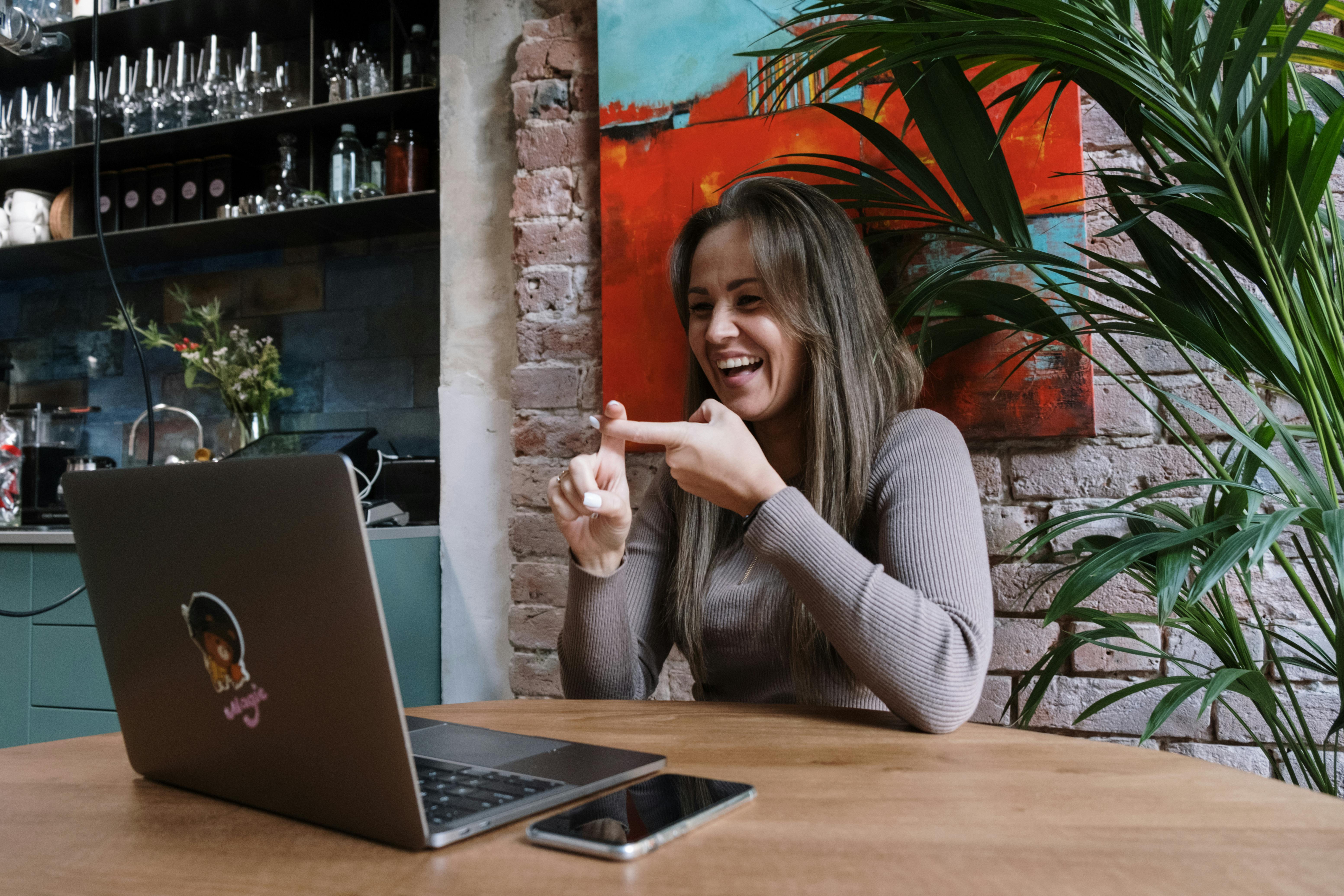






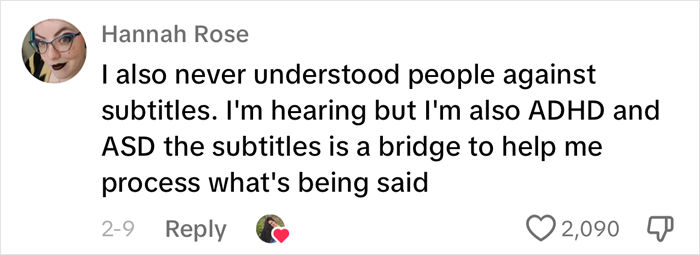















50
18